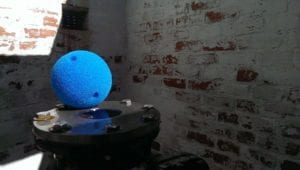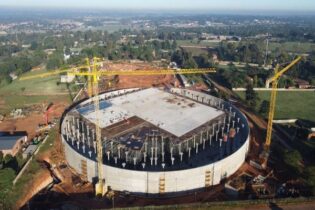Leaks on small diameter distribution pipelines are the most common leak a utility encounters, writes Kobus Prinsloo of Bloem Water.
Locating and repairing leaks on large-diameter transmission piles is also important in maintaining safe and reliable service delivery. These leaks are often more sparse, and therefore more difficult to locate which can lead to prolonged leakage and extensive water loss. Utilities that have a leak detection program in place for their large diameter transmission mains often achieve greater reduction in non-revenue water (NRW), which is the amount of water lost before it reaches the customer. Furthermore, a leak detection inspection is a valuable step as part of a condition assessment program. Utilises can avoid expensive capital replacement programs by gathering real data on the condition of their pipelines and addressing problems as they arise. Bloem Water, who provides water services to the curtail region of South Africa, recently implemented an asset condition assessment project that included a comprehensive leak detection program using inline methods on a strategic 1 200 mm pre-stressed concrete pile (PCP) that supplies the City of Bloemfontein with roughly 60% of its drinking water. Inline leak detection is a very accurate method of leak detection because the acoustic sensor used to identify the sound of the leak is brought directly to the source, unlike traditional methods, such as correlations and listening sticks. Such techniques lack the accuracy needed to locate leaks in larger pipes because the sound of a leak is dissipated in large diameter pipes. Both SmartBall and Sahara Audio Video inspection technologies were successfully applied. A total length of 103 km between De Hoek reservoir and Brandkop reservoir were inspected.To maximise efficiency, the SmartBall leak detection technology was used first to cover large sections of the distance in single deployments. The SmartBall tool is a free swimming leak detection platform that operates while the pipeline remains in service. It is equipped with an acoustic sensor that identifies acoustic anomalies associated with leaks, the acoustic signature is then analysed to determine if it is a leak, air pocket or an external noise.
The SmartBall inspections were followed by selective Sahara AV surveys to provide visual confirmation on the location of the leaks in order to aid in the interpretation of findings and plan interventions. Sahara is a tethered inline leak location and condition assessment technology that pinpoints the location of leaks at the same time as inspecting the internal condition of the pipeline and verifying the cause of leakage using a combined acoustic hydrophone with integrated CCTV camera. Visual leak verification was also performed at all accessible components along the pipeline. Leaks were identified and classified as either pipeline leaks, ie on the pipeline barrel itself), component leaks ie valves, air valves, scour valves etc) or off-takes. The majority of the leaks were found to be components while pipeline leaks were detected mainly on joints (ie where the PCP was connected with prefabricated steel joint pieces). Some of the leaks on these joints may be attributed to poor bedding, improper VJ connections etc. The estimated water loss based on indicative leak sizing categories accounts to approximately 1 200 kℓ/day. Interestingly, of the majority pipeline leaks detected, only three leaks showed any surface signs of leakage. This re-iterates the importance of not relying on surface inspections as the only means of detecting large diameter pipeline leaks. The findings of the latest leak detection surveys were compared to that of a previous Sahara leak detection inspection project performed in 2007/2009 to establish trends. This information combined with a first order engineering evaluation of available pipeline design and manufacturing data, the failure history of the pipeline, operating records and the hydraulic behaviour of the system were incorporated into a risk assessment model for the pipeline. The leak detection findings, engineering evaluation and risk assessment were factored into the development of a pipeline specific management strategy. Bloem Water can now implement this strategy as a guideline to pro-actively manage this valuable asset in order to prolong its remaining useful life, avoiding expensive capital replacement of the asset.







